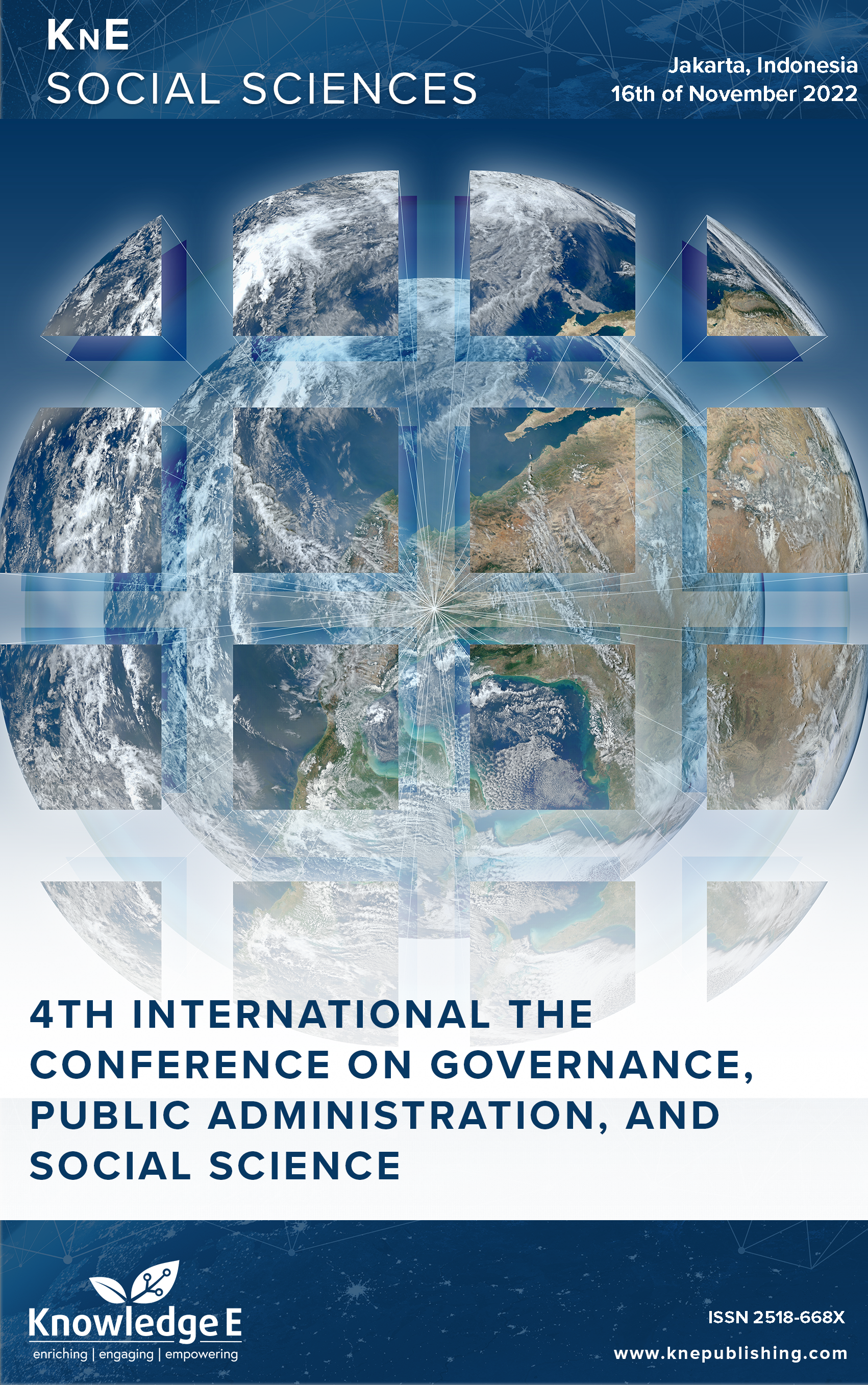Initiative in Active Representative Bureaucracy: Woman Leader in Nusa Tenggara Barat
DOI:
https://doi.org/10.18502/kss.v8i11.13575Abstract
The Gender Development Index in Indonesia, released by the Ministry of Women’s Empowerment and Child Protection of the Republic of Indonesia in 2020, ranked West Nusa Tenggara Province as the lowest nationally. These statistical data show that West Nusa Tenggara’s position nationally is still far behind other provinces in Indonesia. On the other hand, as a province led by a female Vice Governor, West Nusa Tenggara Province has a strategic role in the representation of women in the bureaucracy. Women leaders are expected to play a role in strategic issues related to the gender development index with an active representative bureaucracy. However, the active representation of women in local (provincial) government is still very small, especially in the context/situation of regions with patriarchal characteristics. Furthermore, research with phenomenological approaches/methods is still very rare. This study used phenomenological methods. The subjects of this study are female regional leaders, namely the Vice Governor of NTB Province. The data collection technique used is in-depth interviews and reviewing secondary documents that support the active representation of women in the bureaucracy in the field of education in West Nusa Tenggara Province. The data processing and analysis techniques in this study used technical narrative analysis, which was carried out in several stages such as making interview transcripts and interpreting the meaning of the information obtained by coding techniques, analyzing certain transcripts to then be classified into several themes to identify information that is by the theme and concluding meaning relevant to the research theme. The results of this study show that the importance of women’s leadership initiatives to the interests of women has a huge impact on women themselves. Special needs are becoming more of a concern and are considered as important as other development priorities. This is possible with the active repression of female leaders.
Keywords: Active Representative Bureaucracy, women’s participation, women’s leader initiative, West Nusa Tenggara
References
[2] Grissom JA, Nicholson?Crotty J, Nicholson?Crotty S. Race, region, and representative bureaucracy. Pub Admin Rev. 2009;69(5):911–919.
[3] Jendrius J. Ayam Batino Lah Bakukuak: Otonomi Daerah dan Keterlibatan Perempuan dalam Pemerintahan Nagari di Sumatera Barat. Kafaah: J Gender Stud. 2011;1(2):121–136.
[4] Nuraisyah N, Samad MA. Human resources development: Women role optimization in the local government bureaucracy in Central Sulawesi, Indonesia. J Asian Multicult Res Econ Management Study. 2021;2(3):61–68.
[5] Sayrani LP. Birokrasi representasi berbasis etnik, agama dan gender dalam birokrasi Pemerintahan Propinsi Nusa Tenggara Timur. 2010.
[6] Sipahutar NYP. Representasi Perempuan dalam Birokrasi di Pemerintah Kota Yogyakarta. 2017.
[7] Fernandez S. Representative bureaucracy and performance: Public service transformation in South Africa. Springer; 2019.
[8] Konisky DM. Representative bureaucrats: Attitudinal congruence and agency expertise. Unpublished article University of Missouri, Columbia. 2007.
[9] Le Maux B. Governmental behavior in representative democracy: A synthesis of the theoretical literature. Public Choice. 2009;141:447–465.
[10] Saidel JR, Loscocco K. Agency leaders, gendered institutions, and representative bureaucracy. Pub Admin Rev. 2005;65(2):158–170.
[11] Sowa JE, Selden SC. Administrative discretion and active representation: An expansion of the theory of representative bureaucracy. Pub Admin Rev. 2003;63(6):700– 710.
[12] Theuvsen L. On good and bad bureaucracies: designing effective quality management systems in the agrofood sector. 2004.
[13] Holman MR. Women in local government: What we know and where we go from here. State and Local Govern Rev. 2017 Dec 1;49(4):285–296.
[14] Hooker J, Guy ME. Gender and representative bureaucracy. In: Handbook on Gender and Public Administration. Edward Elgar Publishing; 2022. p. 212–229.
[15] Kennedy AR, Bishu SG, Heckler N. Feminism, masculinity, and active representation: A gender analysis of representative bureaucracy. Administration & Society. 2020 Aug 1;52(7):1101–1130.
[16] Campbell R. Heidegger: Truth as aletheia. In: A hundred years of phenomenology. Routledge; 2017. p. 73–87.
[17] UN Woman. Woman in local government [Internet]. 2022. Available from: https://localgov.unwomen.org/
[18] Kementerian Agama RI. Kemenag KLU Ikuti Musrenbang Perempuan, Pemuda, Anak, Lansia dan Penyandang Disabilitas. 2021; Available from: https://ntb.kemenag.go.id/baca/1616164800/kemenag-klu-ikuti-musrenbangperempuan- pemuda-anak-lansia-dan-penyandang-disabilitas
[19] SuaraNTB.com. Musrenbang, Perkuat Pemberdayaan Perempuan Dan Penyandang Disabilitas. 2022; Available from: https://www.suarantb.com/2022/03/19/musrenbang-perkuat-pemberdayaanperempuan- dan-penyandang-disabilitas/
[20] Dutaselaparang.com. Musrenbang Khusus Perempuan, Seribu Lebih Perempuan di NTB Sudah Belajar Berencana. 2020; Available from: https://dutaselaparang.com/musrenbang-khusus-perempuan-seribu-lebihperempuan- di-ntb-sudah-belajar-berencana/

